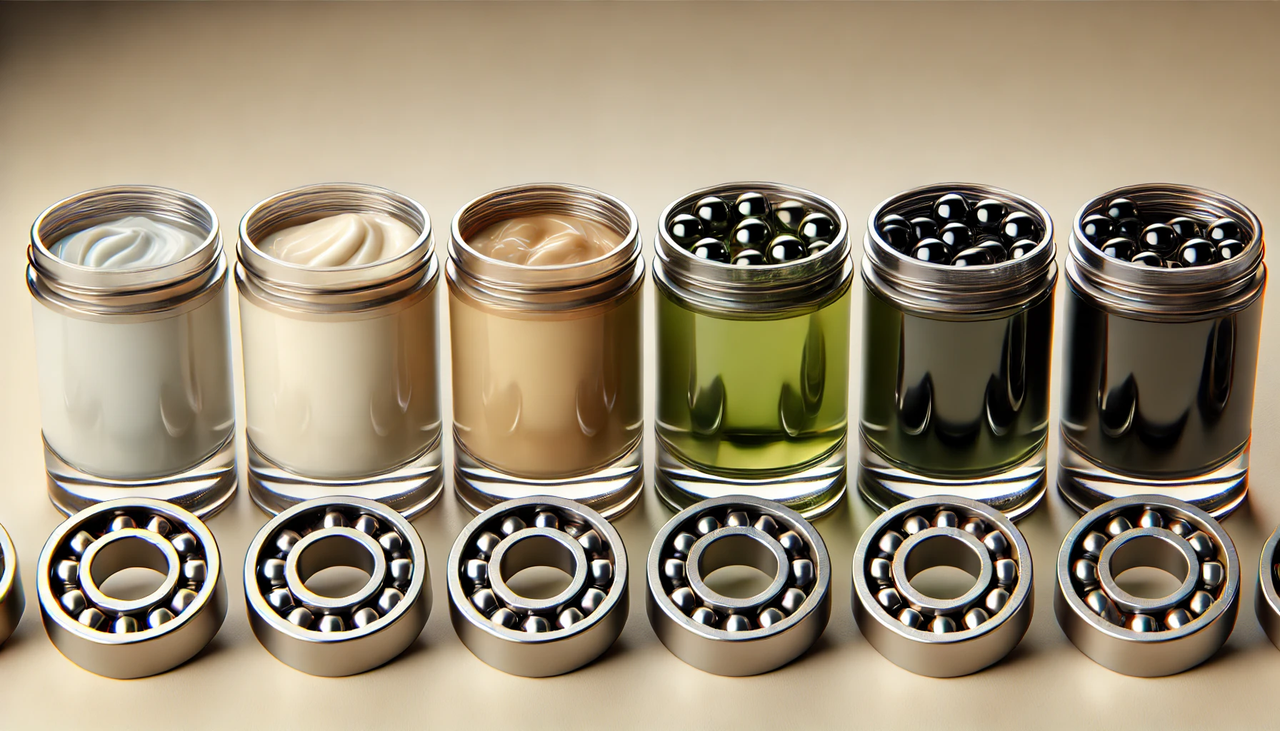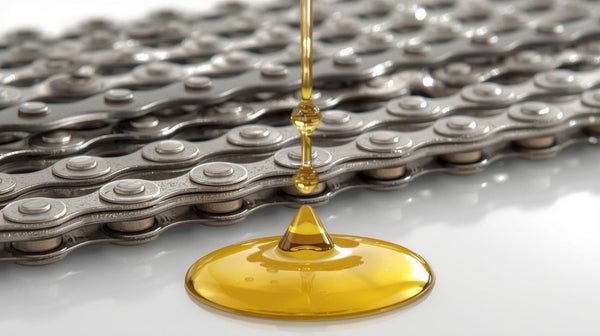Does the color of the grease matter to its quality and application ?
Grease is an essential element in maintaining the efficiency of machines and devices in many industrial sectors. When choosing a grease, technicians and engineers, especially technical designers, often pay attention to its chemical composition, physical properties and operating temperatures. However, one of the more visible aspects of grease that often raises questions is its color. Does the color of the grease have any significance for its quality and application? Below I will try to dispel doubts and explain what factors determine the color of the grease and whether it affects its performance.

What determines the color of grease?
The color of grease can be the result of various factors, including:
- Oil base:
- Most lubricants are based on base oils, which themselves can be colorless, light yellow or brown, depending on how purified they are.
- Chemical additives:
- Ingredients improving the properties of grease, such as corrosion inhibitors, anti-wear additives or stability improvers, can affect the color of the product. Very often, solid lubricant additives determine the color of the grease. This happens if the additives are graphite, molybdenum - black, Teflon - white, powdered copper - red, etc.
- Dyes:
- Many lubricants are intentionally colored to facilitate identification, prevent application errors, or meet customer visual requirements.
- Aging processes:
- Grease may change color with use, which may indicate chemical processes such as oxidation, contamination or thermal degradation.
Does the color of the grease affect its quality?
The color of the grease itself is not an indicator of its quality or performance. The quality of the grease is determined by its physicochemical properties, such as:
- Viscosity and kinematic viscosity.
- Dropping point.
- Oxidation resistance.
- Mechanical stability.
- Lubricating properties (e.g. load-bearing capacity of the oil film).
- Lubricant additives included
Color can only indirectly provide information about certain aspects, such as:
- Presence of additives:
- Greases with a specific color may contain characteristic additives. For example, green or blue grease may indicate the presence of EP (Extreme Pressure) additives used in high-load applications.
- Technical condition:
- A color change during use (e.g. from light to dark) may indicate that the lubricant is contaminated or has degraded.
Why do lubricant manufacturers use different colors so often?
Lubricant colors have several practical uses:
- Product identification:
- Different colours make it easier to distinguish greases intended for different applications, e.g. high-temperature greases may be red and waterproof greases may be green.
- Avoiding mistakes:
- Many types of lubricants are used in industrial plants. Color coding makes it easy to identify the right product for a specific application.
- Aesthetics:
- In some cases, the color of the grease is customized to suit customer preference or visual requirements for applications where the grease is visible.
- Ingredients Tip:
- The color of a grease can also be a clue to technicians and engineers regarding its specifications. For example, white grease often indicates the presence of non-staining ingredients or food contact.
Application examples depending on grease color:
- Food industry:
- In food-related applications, white greases are used, which indicates their compliance with hygiene standards, e.g. NSF H1.
- Automotive:
- Graphite greases are usually dark grey or black due to the presence of graphite particles that improve lubrication properties.
- Heavy industry:
- In applications requiring extreme pressure resistance, greases with shades of green or red are often used, indicating the presence of EP additives.
Black Molybdenum and Graphite Greases – Their Characteristics and Applications
Molybdenum greases (most often black) contain molybdenum disulfide (MoS2), which gives them a characteristic black color and unique properties
Features of molybdenum greases:
- High pressure resistance – molybdenum disulfide acts as a solid lubricant, reducing friction even under extremely high loads.
- Excellent adhesion – MoS2 molecules create a solid protective layer on metal surfaces, reducing the risk of wear.
- High temperature resistance – molybdenum greases retain their lubricating properties at temperatures up to 450°C.
- Moisture resistance – they work perfectly in conditions of high humidity and contact with water, especially when the base used is recommended for use in high humidity conditions
The use of molybdenum greases is very wide and includes:
- Heavy industrial machinery (excavators, presses, lathes).
- Gears operating under heavy loads.
- Lubrication of mechanisms exposed to boundary friction.
- Devices operating in dusty and polluted conditions.
White greases are common in the food industry.
Lubricants intended for the food industry are most often white, which is due to the use of special additives and base oils safe for human health.
Features of white greases:
- Food contact safety – meets NSF H1 standards, meaning they can be used where there is a risk of accidental contact with food.
- Water resistance – protects machine elements against corrosion in a humid environment
- Chemical neutrality – they do not react with any substances used in food production.
- Visual cleanliness – white colour makes it easier to spot contamination or leaks, which is crucial in processes requiring high hygiene.
Application:
- Equipment in the food industry, e.g. production lines, mixers, packaging machines.
- Machines in the pharmaceutical and cosmetics industry.
- Mechanisms in the beverage industry where high hygiene standards are required.
White PFPE fluorinated greases – long-lasting greases.
Perfluoropolyether (PFPE) based lubricants are also white in color, but their applications extend beyond the standard areas.
Features of PFPE lubricants:
- Extreme thermal resistance – PFPE retains its lubricating properties at temperatures ranging from -90°C to as high as 300°C.
- Extraordinary chemical stability – Resistant to chemicals, oxidation and UV radiation.
- Low volatility – They do not evaporate at high temperatures, which ensures long-term lubrication.
- Pollution resistance – PFPE does not absorb moisture or particles from the environment.
Application is widespread and includes:
- Mechanisms operating in extreme conditions, such as aviation, the space industry or nuclear energy.
- Equipment in the chemical and petrochemical industries.
- Lubrication of components in sterile environments, e.g. in laboratories.
- Applications requiring long-term reliability where lubricant replacement is difficult or expensive.
Color as an indicator of grease consumption
Often, grease manufacturers design them so that the color change of the grease during use informs the user about valuable diagnostic states of the lubrication node. And so:
- Darkening of the grease may indicate contamination, e.g. with metal particles or soot.
- Grease Clarity: Loss of clarity may indicate thermal or chemical degradation.
- Presence of water: Water contamination often causes grease to become milky.
How to choose the right lubricant?
When choosing a grease, color should not be the main criterion. The key is to match the product to:
- Operating conditions (temperature, load, speed).
- Type of machine and its specifications.
- Environmental requirements (e.g. water resistance, biodegradability).
Having read the text above, we can clearly state that the color of the grease should not have any significance when choosing a grease. The color of the grease, although it may be useful as an identification indicator, is not in itself a determinant of the quality or efficiency of the product. Its physicochemical properties and adaptation to the specific needs of the application are more important. In engineering practice, the color of the grease can play an auxiliary role, facilitating the selection of the right product and control of its technical condition. Therefore, instead of being guided only by the color, it is worth carefully reading the safety data sheet and technical specification of the grease before using it. The ABS Serwis offer, which can be found on the website https://sklepsmary.pl/ , includes a whole range of colors for greases and lubricating pastes used to protect and lubricate lubrication nodes.
















